

CROWN AND BRIDGE
Improves the appearance and function of a smile.
ZIRCONIA MONOLITHIC & LAYERING

Omegaden Laboratory offers 2 types of zirconias, which are monolithic (full zirconia) and layering (zirconia core with porcelain finishing).
Monolithic - lower degree of translucency but a much higher flexural strength of more than 1200 Mpa.
*Suitable for posterior cases.
Layering - higher degree of translucency but has a flexural strength of more than 800 Mpa.
*Suitable for anterior cases.
For long bridges, we also mix the 2 types of zirconia to create a more aesthetically pleasing bridge without compromising its flexurel strength.
















































WHY ZIRCONIA CROWN & BRIDGES?
01
Very strong, minimal tooth preparation required
04
Can be layered with porcelain for aesthetics
02
More tapered and less visible margins
05
Can be easily duplicated
03
Shorter processing time
06
Versatility on various restoration

GLASS CERAMIC


The proven all-ceramics are easy to handle and produce customized results that fulfil the most exacting aesthetic standards.
The state-of-the-art IPS e.max system was launched more than a decade ago. It combines the benefits of lithium disilicate (LiSi) and fluorapatite glass-ceramics with those of zirconium oxide ceramics.
Omegaden Laboratory offers both press technique and e.max CAD (milled by our CAM unit). The all-ceramic materials cover a broad spectrum of indications to meet all types of patient requirements. The innovative IPS Ivocolor range of stains and glazes rounds-off this successful materials system.






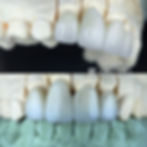

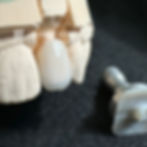




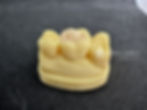
















WHY GLASS CERAMIC?
01
Great bonding with tooth
04
Minimal tooth preparation required
02
Short processing time
05
Less wear on opposing teeth
03
Highest level of esthetic
06
Versatility on various restoration
PMMA

PMMA (Poly-methyl methacrylate) is a clear plastic acrylic material that can be used as a replacement for glass.
A temporary crown is a provisional, short term restoration used in dentistry. The temporary material is designed using CAD/CAM and forms a tooth shape that protects the prepared tooth, preventing damage to the periodontal tissues (gums) and disguises the prepared tooth to a degree until the final, definitive restoration can be made.
PMMA milled crowns which comes in various colours are an adequate, temporary, fast and reliable way to save chairside time, whilst the hardness and resistance of the material is perfect for the preparation of provisional pieces.



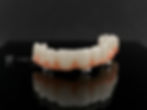

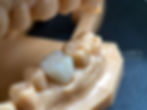






WHY PMMA?
01
Cost effective
04
Provisionalization
02
Ease of fabrication
05
Ease of removal
03
Short processing time
06
Great dimensional stability

PORCELAIN BONDED (PFM)

Omegaden Laboratory's PFM cases are done by using the CAD software to ensure maximum precision on the crown's margin.
The porcelain fused to metal crown offers great aesthetics which provides a very attractive natural tooth like appearance. The substructure of the porcelain fused to metal crown is designed using our state of the art CAD/CAM facilities allowing for a precise, accurate fit for any type of preparation.
Porcelain fused to metal has the advantage of flexibility as they can be used on both anterior/posterior restorations and is versatile for any number of restorations.








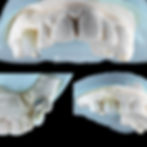
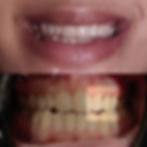


























WHY PFM?
01
Extremely resistant for breaking in bridges
04
Cost effective
02
Great bonding with tooth
05
Great esthetics
03
Ease of chairside adjustments
06
Ease of lab adjustments
FULL METAL

Omegaden Laboratory offers non-precious, semi-precious and precious alloy for our full metal crown and bridge.
Compared to other crown types with metal, minimal amount of tooth structure has to be removed and wearing out of adjacent teeth is also minimal.
These crowns can withstand chewing and biting forces well and last for over a long period due to its metal material, which hardly breaks.
WHY FULL METAL CROWNS?
01
Tremendous strength
04
Extreme durability
02
Minimizes adjacent tooth wear
05
Fracture resistant
03
Minimal clearance needed
06
Minimal tooth preparation required

METAL OCCLUSAL

Metal occlusal crowns, often constructed from non-precious metal alloys, are highly favored for their exceptional durability and long-lasting performance.
They emerge as the preferred choice, especially in the posterior teeth, where occlusal clearance is limited, and the impact of robust chewing forces is a significant concern. While these crowns may not boast the esthetic appeal of other options, their practical advantages, including robustness, cost-effectiveness, and suitability for areas with restricted occlusal clearance, make them a compelling choice.
In comparison to full porcelain coverage PFM crowns, metal occlusal crowns are notably more suitable for posterior teeth and the palatal region of anterior teeth, where visibility during a patient's smile is not a primary consideration.
WHY METAL OCCLUSAL?
01
Extremely resistant for breaking in bridges
04
Cost effective
02
Great bonding with tooth
05
Great esthetics
03
Ease of chairside adjustments
06
Ease of lab adjustments



.png)